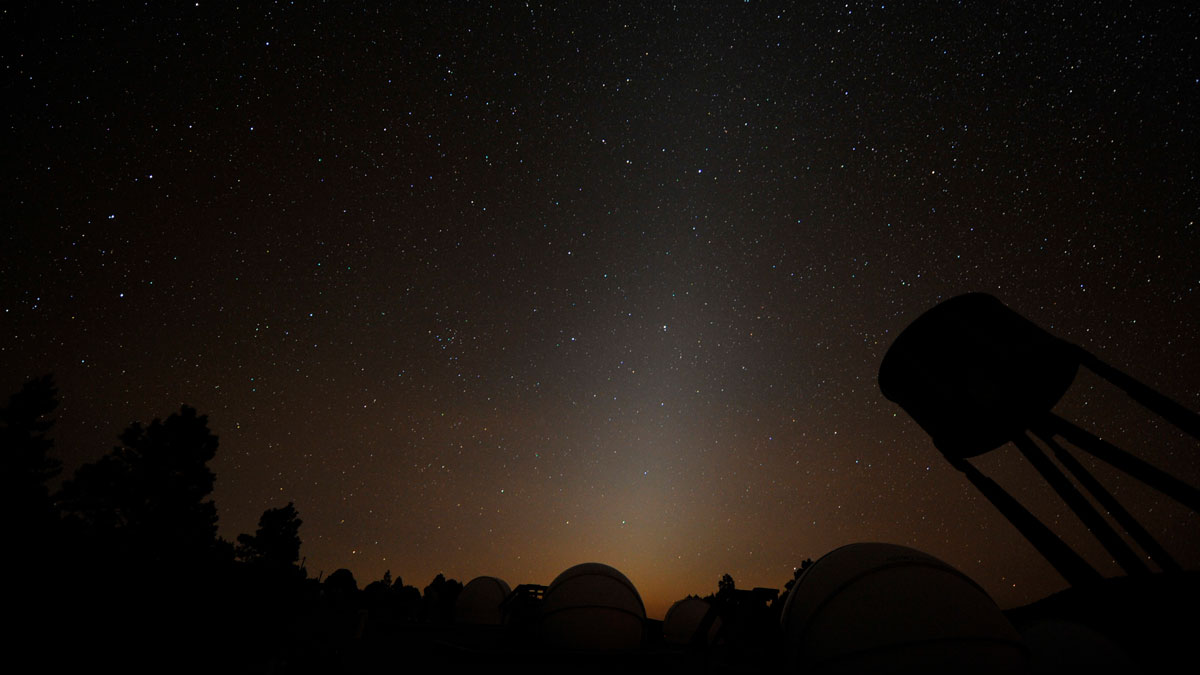Without phosphorus, there’s no life. It’s a necessary part of DNA, RNA, and other biological molecules like ATP, which helps cells transport energy. But any phosphorus that was present when Earth formed would’ve been sequestered in the center of the molten planet.
So where did phosphorus come from?
It might have come from cosmic dust.
When Earth formed, phosphorus was part of the materials that coalesced into the planet. But one of Phosphorus’ properties means that much of the initial element is gathered in the Earth’s core, rather than the Earth’s crust. Phosphorus is a siderophile element, meaning it likes to dissolve in iron. Since so much of Earth’s iron sank to form the planet’s core, it took much of the phosphorus with it.
Because of that, no phosphorus was available for life when Earth formed, and it had to come from somewhere else. It also had to arrive on Earth over a long period of time. Previously, scientists hypothesized that meteorites and comets might be the source. But a new study suggests that phosphorus might come from cosmic dust.
The new study is titled “Phosphorus Chemistry in the Earth’s Upper Atmosphere” and it’s published in the Journal of Geophysical Research Space Physics. The lead author is John Plane, Professor of Atmospheric Chemistry at the University of Leeds.
Each year, thousands of tons of cosmic dust reach the Earth’s surface. Most cosmic dust is tiny particles only a few hundred micrometres in size. A lot of it is silicate minerals, the most common type of minerals on Earth, including quartz, olivine, and feldspar. Some cosmic dust includes carbonaceous material, sulphides, metals, and other minerals and compounds, including phosphorus. Almost any object in space—but especially asteroids and comets— can produce it through processes like volcanism and outgassing, or by impacts.

Before phosphorus is useful to living things, it must be in the form of phosphates or metal phosphites. In the paper, the authors show that cosmic dust can go through a series of chemical reactions as it travels through the atmosphere, eventually stabilizing and settling to the Earth’s surface.
When cosmic dust, or interplanetary dust grains (IDP) strike Earth’s atmosphere, they heat up. The heat causes them to melt and vaporize, a process called ablation. Previous laboratory studies have flash heated dust-sized fragments of meteorites and detected the release of molecules containing phosphorus. Modelling based on these experiments showed that IDPs could be a significant source of phosphorus over long time scales.
In this new work, the authors wanted to deepen the understanding of cosmic dust, and how ablation and chemical processes could deliver biologically useful forms of phosphorus—phosphides and phosphites—to Earth. To do that, they took the lab results from previous experiments and combined them with theoretical predictions for other chemical reactions that haven’t been studied in the laboratory. With that reaction model in hand, they incorporated it into a global climate model.

The results supported the idea of cosmic dust as the source for much of Earth’s biologically useful phosphorus. With their global climate model, they were also able to show what regions on Earth might receive the most phosphorus: the Southern Andes, the Northern Rockies, and the Himalayas. The team also found that the Earth might be encircled by a narrow atmospheric layer of a phosphorus-containing molecule called OPO at an altitude of about 90 km (56 mi.)

Not all of the phosphorus that enters Earth’s atmosphere becomes biologically useful phosphorus. The researchers estimate that about 11% forms metal phosphites which become meteoric smoke and eventually settle to the Earth’s surface.
Though much of this work is theoretical, the authors point out the utility of their study. “Nevertheless,” they write in their paper’s conclusion, “two important conclusions can be drawn.”
“First, the ablation of phosphorus from IDPs provides a substantial and continuous source of oxidized P to the surface in the form of submicron-sized smoke particles. Second, a not-insignificant fraction of the phosphorus is likely to be in the form of bioavailable phosphites rather than phosphates…”
If they’re correct, their results have important implications in our understanding of the history of life on Earth. Firstly, initial phosphorus was sequestered in the Earth’s core, unavailable for life. Their model shows how cosmic dust could be a continuous source of biologically-available phosphorus.
Future research might explain this in more detail. Future research might also be able to find out if the amount of phosphorus from cosmic dust varied before and after the Great Oxygenation Event (GOE), a critical period in Earth’s deep history.
If there is a link between the GEO and cosmic dust phosphorus, then it’s just one more example of how so many things had to happen for life to do what it’s done.

